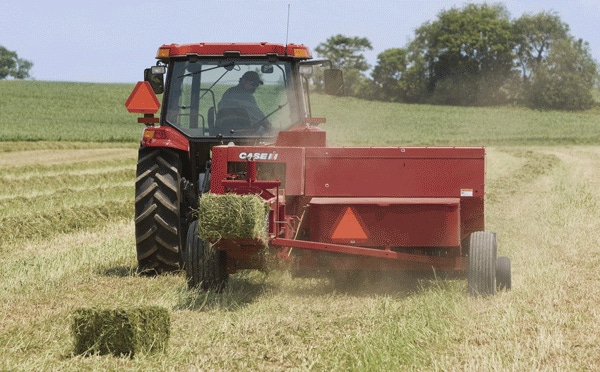March 15, 2011

Tennessee’s pastures are green and growing. For livestock farmers, spring is a welcome time to switch from feeding stored hay to having their animals graze in fields.
Still, something to consider is that this spring’s pasture will produce next winter’s feed.
“When hay is stored, we have a good source of nutrients for cattle that can be fed when it’s needed later,” says Gary Bates, a forage specialist with University of Tennessee Extension.
Bates says it’s critical for farmers to know when hay is just right for cutting in order for their herds to eat well when the cold weather returns. “The most important factor that determines hay quality is the state of maturity at harvest,” he says.
As legumes and grasses advance in maturity, they actually drop in crude protein and digestibility. Bates says it is best to cut grass pastures from the boot stage to the early head stage for the first cut, and then four to six weeks afterwards. The late boot level might best be described as when the seed head first pops out of the sheath. The early head stage is when the plant has grown about another foot or so.
Tall fescue or orchard grass hay cut early will be high quality, and good to feed to a lactating cow or calf.
Appear in early May
These stages generally appear — if the land receives a normal amount of moisture — around the first week of May in most parts of Tennessee.
Bates warns that waiting too late to cut hay could mean an additional expense for producers. “You will likely get a lot of tonnage, but the hay will be of low quality,” says Bates. “Then you might need a protein or energy supplement to meet the nutritional needs of your herd.”
Sometimes for producers it’s not possible to get all the hay cut during its proper stage, but Bates says it’s important to get some of it harvested to feed spring-calving cows next year. Many of these cows calve in February or March when not much is growing. That’s why it’s important to have high-quality hay stored for them.
“High-quality hay can meet their needs and help them produce adequate milk for their calves,” says Bates.
Another tricky aspect to hay cutting is trying to time the weather. “It’s best to cut hay after a few dry days, and preferably with warm temperatures.” Bates says, “but that’s not easy in the topsy-turvy spring that Tennessee usually sees. It’s important to be ready to cut hay if we see at least three good days of weather,” he says.
Bates also recommends that producers examine their hay-cutting equipment now rather than wait until it’s almost time to go into the fields.
For more information, contact the UT Extension office in your county or visit the UT Extension publications web page: https://utextension.tennessee.edu/publications. Additional information may also be available online at the national eXtension website. eXtension delivers knowledge from land-grant university experts across America, including the University of Tennessee. Visit http://www.eXtension.org.
You May Also Like




